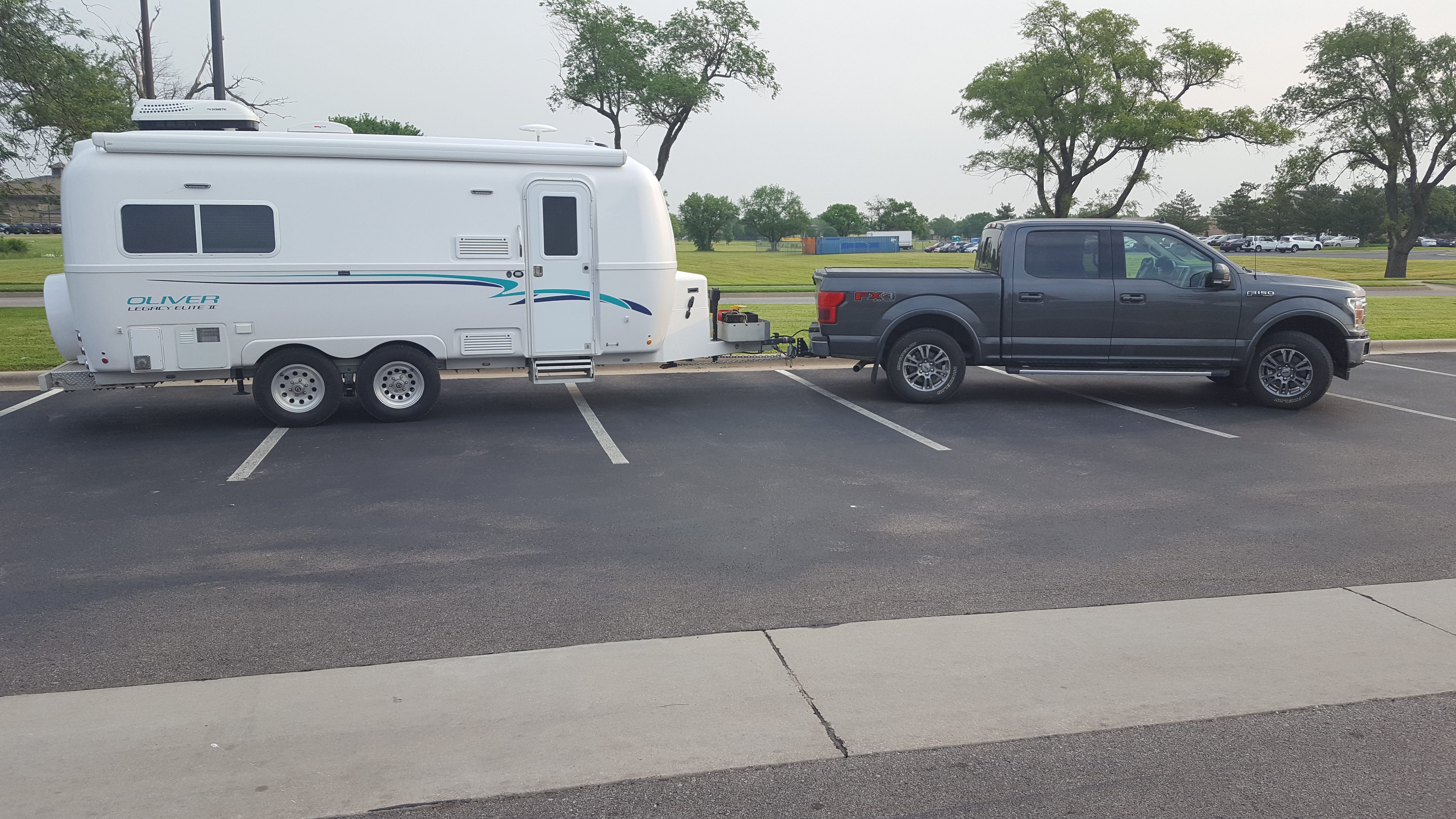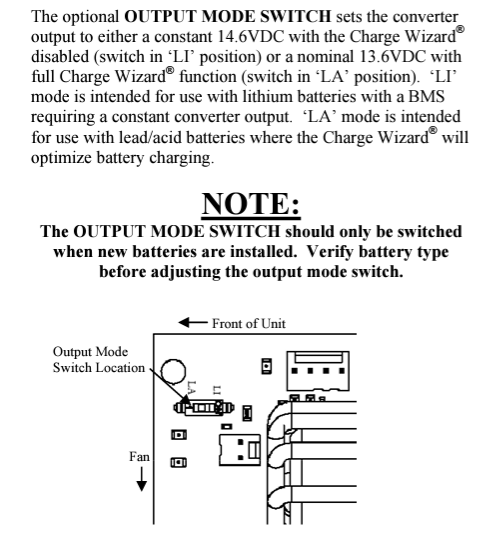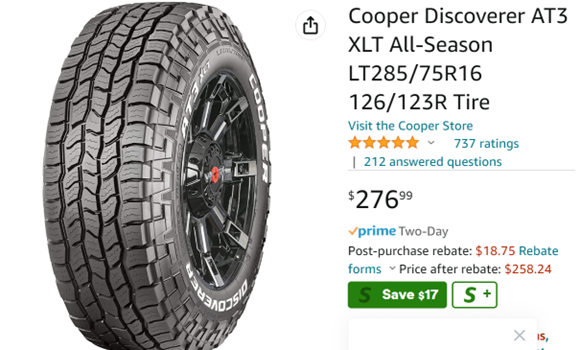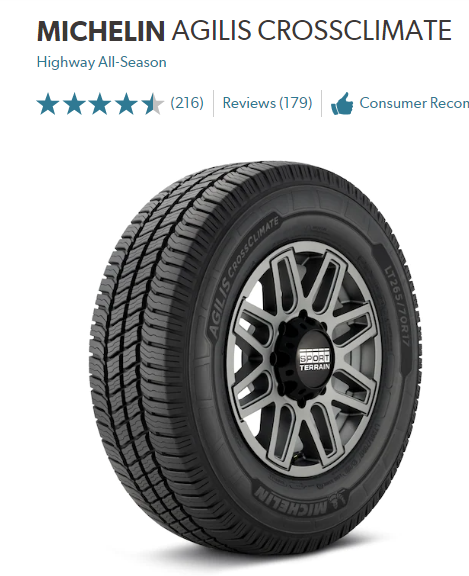-
Posts
2,213 -
Joined
-
Last visited
-
Days Won
63
Everything posted by Geronimo John
-

Parking on Slopes or Hills
Geronimo John replied to Chris Scarff's topic in Mechanical & Technical Tips
For sure! Leave at least one of our safety chains connected until AFTER you have chocked and leveled Ollie. When preparing for departure, back up to Ollie and first connect one of the safety chains. As I have stated before: "Nothing like having a 6,000 pound anchor!" GJ -

Parking on Slopes or Hills
Geronimo John replied to Chris Scarff's topic in Mechanical & Technical Tips
YES! -

Parking on Slopes or Hills
Geronimo John replied to Chris Scarff's topic in Mechanical & Technical Tips
I carry a milk crate full of 2 X 6 blocks. I use three under all my jacks to act as a shear-plane. Should for some reason the trailer moves, I'll hear a clunk and recall that I failed to use my check list. In your hill park picture, I see you are doing your best to keep Ollie in place. You even have a block to act as your shear-plane if it moves. Bravo! The two suggestions would be to: A. Use a line and tie off your brake emergency cable to a tree. If the trailer moves at least your Ollie brakes will activate. B. Bring more 2 X 6 blocks and shorten up the lever arm of the jacks as much as possible. GJ says: "Jack up Ollie as you need, but keep the jack extensions as short as your pre-planning will allow" -
JD: Yep for sure on that one. Thanks for filling in the rationale. All: I'll likely mount our solar suitcase charge controller out of the weather in the Ollie battery compartment. My Keep it Simple is to just roll out the panels and plug them into a solar port on the door of the compartment..... IF it does not put out significant heat when charging at capacity. Anybody have the larger 200 watt Renogy solar suit case with the 20 amp charge controller think it puts out more heat than should go into the OE2 batter compartment? Thanks GJ
-

Water Heater Anode Rod difficult to screw back in
Geronimo John replied to Imelda's topic in Mechanical & Technical Tips
Having such a wand greatly improves the process. If you have an old 1/2" garden hose that should be in the trash pile, you can make one really easy from it and some scrap metal tubing and a hose clamp (El Cheapo GJ style). Or just buy a nice one with a valve on it. Either way good purchase suggestion -
JD: Those look like hte100 watt solar suit cases. Assuming your batteries are at say 70% SOC = 13.2 volts X 6.7 amps = 88 Watts input to the controller. That's really good! Question: Curious why you did not mount the charge controller inside your trailer? Maybe with your Battleborns? Then use a solar port through the battery box door? GJ
-
Our 2018 4060 manual has a selector switch for LI and Flooded. The LI sets it at a constant 14.6 volts per below. When I started the planning for my system over a year ago, I called Battleborn about needing (or not) to change this unit out. They indicated that this model does not have the Charge Wizard for the Lithium switched mode. As such my charging instructions are to charge to the SOC 95% charge and kill the breaker to the Converter for day to day needs. For equalization every few weeks, charge to SOC of 90%, and then at continue to charge at 60 amps rate for an additional 90 minutes for my Battleborns. So basically my charger is pumping out 14.6 volts all the time the breaker is on. This is why I was wondering how the other chargers... that ARE smarter... would be impacted. I guess this would have been good info to have provided as from your response apparently some models of this are Lithium Charge Wizzard enabled.????? GJ
-
It was just a few years ago that a couple of sage wise Oliver owners dipped their toes into the Lithium world. Since then, following their foot steps, now many of us have DYIed the conversion to Lithium. Fortunately many of us RoF's (Retired Ole Farts) are now sporting the "Lithium Grin" and have survived the conversion process mostly intact. Those of us in the Boomer Generation that grew up with slide rules as our favorite calculating device, often were able to figure out the conversion process. Having mechanical and electrical power wiring skills made it possible. But, like myself, we lack the fundamental understanding of how the underlying technologies play or don't play together well. I hope that this thread can be used to help owners better understand how THEIR systems can, or should not "Play Well Together". So I ask forgiveness of the super tech savvy younger owners as what may happen is a series of "How will my system Play Together" questions. Likely mine, and a bunch more down the line, will remind you of the dumb questions we see their customers asking at the bottom of Amazon.com products..... This starter post is for Hull 342, our "Ollie". We purchased our 2018 OE2 with Lead Acid batteries and have a Honda EU2200 inverter generator.. This past summer, we successfully made these upgrades: PD 4045 to PD 4060 2000W Inverter to Renogy 3000 watt Three 100 AH Battleborns Victron 12/12-30 DC to DC charger (#4 AWG Cabling) Victron 712 Smart Renogy 200 Watt Solar Suit Case. I use the DC to DC charger when on the highway only. I use solar when camping. Significantly less frequently we use Shore/Gen power to charge. Questions: A. When on Shore Power OR running our Honda, is it advisable to use the Progressive Dynamics 4060 converter and solar suit cases at the same time? B. The Battleborns collectively can charge at up to 300 amps. Our total max possible charge capability is 102 amps (PD 4060 = 60 amps, DC to DC 30 Amps and Solar Suit Case effectively 12 Amps). There have been a time or two when we were in a jamb for time and I really wanted to maximize charging our batteries: Is it advisable to fire off all of the systems simultaneously? If not, which should I safely only use? Thanks, GJ
-

Water Heater Anode Rod difficult to screw back in
Geronimo John replied to Imelda's topic in Mechanical & Technical Tips
I'm thinking that Mike has a good first step to consider before making a thread chaser. My suggestion would be to take a pair of vice grips and grab the anode securely. Then using the leverage of the vice grip you will be better to insert and turn the new anode squarely to the water heater threads. If that does not work, then consider John D's cleaver idea. GJ -

getting ready to camp after 2 yrs in storage
Geronimo John replied to LindaShields's topic in Introduce Yourself
I totally understand your perspective. IF I were to be a salesman, and I wanted to poise my rig at an event, I would wave my magic wand to presto have the most macho looking tires on the market under both. But before I took The Beast and Ollie on a trip, I would wave my magic wand and go back to purpose designed tires for each of my rolling stock. 🙂 As an engineer I look at purpose and function. Traction tires, especially those that work well on our 4X4 TV's off road, have different priorities of purpose than our trailer tires. So, in my minds eye, they likely would not be identical twins. But that's just my perspective. -

getting ready to camp after 2 yrs in storage
Geronimo John replied to LindaShields's topic in Introduce Yourself
I was under the impression that they were no longer available for our OEM OTT rims. ?????? -
Lithiums! But the change over is a time consuming effort that requires some mechanical and electrical skill. There are several threads on this topic. A simpler change is to go with AGM's. But if you are going to own your OE2 for a long time, the cost and performance benefit of Lithiums is WAY better than all other options. I don't know of any owner that still owns their trailer saying they wished they had not converted to Lithiums. GJ
-

Replacement for Water Pump Filter
Geronimo John replied to BillATX's topic in Mechanical & Technical Tips
For sure my screen/bowl has snagged plenty of installation shavings... especially in the first two seasons. But frankly I would like to change out the unit with a true water filter that would not be a PITA to install and service. Any suggestions along these lines? GJ -

getting ready to camp after 2 yrs in storage
Geronimo John replied to LindaShields's topic in Introduce Yourself
Max: I assume you are all talking about the Cooper AT3 tires as Mike stated. Correct? John G: Your selection of the Ageis Cross Country is very interesting. Here are the pictures of the tires mentioned so far: The Cooper AT3's have a great following and reviews. I will be considering them for replacement on my F-150 FX4. But for Ollie, I have concern that the tread pattern will be more susceptible to tossing rocks than the Michelin Agilis CrossClimate. I also like that the Agilis being a commercial vehicle tire. On Michelin's site they state it is "their most durable tire". Looks like I need to do some more research. Thank you for the suggestions! At least now I know that I do not need to change rims too! GJ -

getting ready to camp after 2 yrs in storage
Geronimo John replied to LindaShields's topic in Introduce Yourself
I have run Michelin's on all my rolling stock for 52 years. Never had a problem. As such, I consider my experience to their products to consistently be top notch. As such, my comments were pretty explicit. None the less, eventually my Ollie Michelins will require replacement based upon their condition, not some arbitrary age opinion. Sadly, as indicated on other posts, I understand that they no longer make LT or ST tires for our OE2 16" rims. Are there any brands that offer such quality tires as Michelin, that wear out before they age out, and fit our rims? GJ -
I HIGHLY recommend that when doing brake/bearing service that you verify that the EzFlex "Heart Bolt" is torqued to spec. Always put your torque wrench on the nut side as the bolt head has splines to keep it from turning. We have documented four instances where for what ever reason, the bolt head splines were compromised and that allowed the EzFlex to spin the bolt and nut. What happened then is that the nut walked away from the trailer and the bolt tried to follow. Fortunately the bolts were hanging on by their last two threads. Had these owner's trailer gone negative (Deep pot hole or catching air), the unloaded bolt likely would have flipped out. Not something that you want to experience on the highway at speed. Per BHNCB the center bolt nut should be torqued to 65-75 ft-lb. Per OTT, the flank of the center bolt (NOT the threads) should have Never-Seize applied. If you find your center bolt nut not close to specification torque, you likely have compromised splines. Apply say 50% of torque specification. If it spins, remove and inspect. If you find your splines are damaged..... be glad you caught it. If so, see BackOBeyond's the forum post "Dexter axle loose bolt at the equalizer " and my June 9, 2022 fix. GJ
-

getting ready to camp after 2 yrs in storage
Geronimo John replied to LindaShields's topic in Introduce Yourself
Good to know. My 2018 has the Michelins. GJ -

getting ready to camp after 2 yrs in storage
Geronimo John replied to LindaShields's topic in Introduce Yourself
I agree with Both Mike and Steve in their cautions. But, I suggest you have your tires inspected by a qualified technician: If your trailer came with Michelin LT tires, and don't have a lot of miles, there is a probability that they are still in pristine condition as they have been stored inside out of the sun and weather. My experience with Michelins is that they slowly age out compared to other brands. However if they are not Michelin tires, then the odds decline. Any age related defect, regardless of brand should result in a reshod of your Ollie. Follows is a lot of "IF''s": If you are towing your trailer long distances in areas where assistance is unlikely then stretching the life of the original tires is generally a bad idea. If you are traveling at or below the posted speed limits on paved roads. If on the other hand, the Tech finds no defects, and if you are camping local and if the sites are paved, then your risk factor may be acceptable. And the BIG IF is: Are you comfortable and capable of changing a flat trailer tire on the side of the road? That's a lot if "IF's". So basically for me, this is more about Risk Management and not a hard and fast rule that all tires should be retired at age X. Geronimo John -
Winterization Step One: If you have a battery master switch, turn it to OFF. If not, disconnect the positive terminal that feeds power into the cabin. The parasitic losses in our trailers are small, but over winter the accumulate a lot and certainly can cause our batteries to suffer. OLD SCHOOL METHOD: Were I in your shoes, I would disconnect all four batteries and individually put a slow charger on them and try to bring them up to charge slowly. Once you get some voltage on them, you could then take the charging power up to 25 amps. Just keep an eye on their temperature. If hot to your hand or boiling, back the charge back to 2 amps or so. The process can take a lot of time slow charging, but the potential for more damage is much less. Once you think you have them charged, you could individually put one at a time on a battery load tester. It will load them up to 1500 watts load and you can calculate how much power they were able to deliver from full charge to the 50% voltage. Don't draw them down below this voltage. The answers between each of your four batteries should be very close. If one is not, bingo you know what failed. GJ








